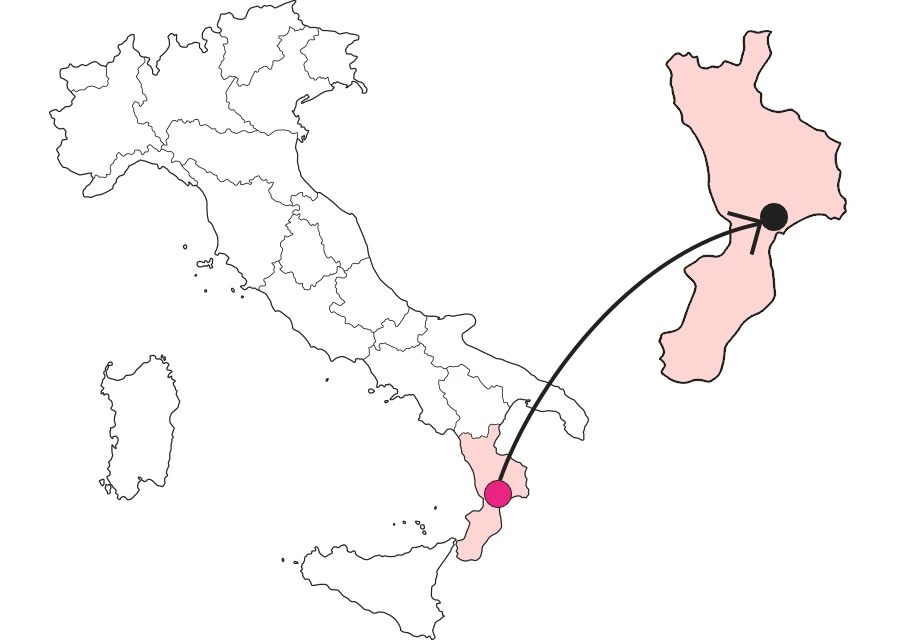








Abbey of St. Mary of Corazzo
In an aura of religious isolation and mystery, on the trail of Abbot Joachim of Fiore


Where

What it is and where it is
The ruins of the monastic complex of the Abbey of St. Mary of Corazzo are located about 6 km from the town of Carlopoli (CZ), in the hamlet of Castagna, in a valley plain between the mountains of the Presila of Catanzaro, located on the right bank of the Corace River, from the Latin corax -acis, "raven," to whose name the abbey clearly links its designation.
Why it is special
The abbey is linked to the name of one of the greatest medieval mystics-Joachim of Celico. The "calavrese abbot Giovacchino, of a prophetic spirit endowed," as he is described by the supreme poet Dante Alighieri in the 12th canto of Paradise; Gioacchino da Fiore donned the monk's habit here, becoming abbot from 1177 to 1187, and within these walls he wrote his major works, "Concordia of the New and Old Testament," "Explication of the Apocalypse," and the "Psalter of the Ten Strings."
Not to be missed
What can be seen today of the rich wonders once housed within the church of Corazzo? When the abbey was suppressed by Napoleonic decree in the early 1800s, the partitioning of its property began, which today we find scattered among churches in the surrounding area: the polychrome marble high altar and a white marble stoup in the parish church of San Giovanni Battista in Soveria Mannelli; the stoup and marble high relief representing a Madonna and Child, in the Church of the Holy Spirit in Castagna; the baptismal font in the parish church of Serrastretta; and the tabernacle in the Church of the Assumption in Scigliano.
A bit of history
The ruins currently visible are referable to a major reconstruction of the original 12th-century Cistercian monastic complex, which took place after the disastrous earthquake of 1638. In the mid-1700s, in fact, it was magnificently rebuilt and enriched with fashionable stuccoes, beautiful paintings, fine variously colored marble, a single nave with four side chapels and vaulted roofing, at the hands of the Neapolitan architect Abbot Borrello, with work lasting from 1757 to 1764/1768 and consecration on October 22 of the following year by Bishop Nicola Spedalieri, bishop of Martirano. A splendor that lasted little more than a century as first the 1783 earthquake and then the Napoleonic decree sealed the end of the history of Santa Maria di Corazzo.
Trivia
Each abbey was organized with a recurring architectural scheme: the cloister was placed in the center of the complex and served as a connecting porticoed space for all parts of the monastery. The church was built to the north of the entire complex, in an East-West direction - with the apse facing East, where the sun rises, symbolizing divine light; while to the south were located the cloisters and the living quarters of the monks - kitchens, refectory, dormitory, chapter house, etc., so that they could enjoy more sunlight and warmth. In the spaces of the Corazzo monastery it is still possible to glimpse a wall recess in which an ancient fireplace was housed !

